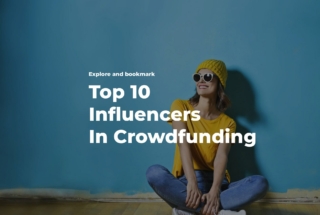50 Facts About Crowdfunding
No time to read? Let AI give you a quick summary of this article.
Since its inception, crowdfunding has evolved into a powerful tool that enables individuals and businesses to raise capital from a diverse pool of backers.
From its early beginnings to the global phenomenon it is today, crowdfunding’s history is filled with fascinating milestones, unexpected twists, and even dramatic scandals.
As we explore 50 key facts about crowdfunding, we’ll uncover how this innovative approach to funding has shaped industries, supported creative projects, and sometimes sparked controversy along the way.
- Investors wait 10 years to get paid when investing in startups and around 5 years when investing in REITs.
- There are 84 funding portals in the US operating under Reg CF as of 2024.
- There are around 770 crowdfunding platforms in Europe and the UK according to CrowdSpace. Only about 210 companies obtained ECSP licenses as of 2024.
- There are 18 companies in the Fintech Lab of Capital Markets Authority in Saudi Arabia offering equity and debt investing services as of 2024.
- In 2020, only around 22% of crowdfunding platforms in Europe were running on white-label crowdfunding software, while 57% were custom-built.
- According to the crowdfunding industry report by JustCoded in 2020, 35% of crowdfunding platforms spent over EUR 200,000 on building the platform, while 26% spent around EUR 100,000 – 200,000, and 19% allocated EUR 25,000 – 50,000.
- Crowdfunding platforms had almost equal niche focus in 2022. 51% had a particular sector preference, while 49% didn’t have any niche focus and provided services for different industries.
- Real estate (32%) and green energy (22%) were the top niches for crowdfunding platforms in 2022.
- Only 6% of crowdfunding platforms implemented blockchain in 2022, while 13% were planning to do it, and 81% had no plans to incorporate blockchain into their strategies.
- In 2023, 125 platforms out of 594 identified as operating in European countries took part in a survey which showed that 34.4% of platforms offered equity crowdfunding, 42.4% provided debt crowdfunding and 23.2% focused on non-investment models.
- In 2023, most crowdfunding platforms (60%) focus on one model such as lending, equity or non-investment based, while 40% offer a combination of two or more models.
- In Europe, 2/3 of investment platforms have some form of collaboration with traditional finance institutions, while 10% of such platforms are owned by the traditional finance players as of 2023.
- As of 2022, the majority of crowdfunding platforms (74%) were founded in 2014 – 2019.
- When it comes to crowdfunding platform licensing, 83% are registered directly with the regulator and 17% use umbrella compliance, according to the data in 2022.
- The minimum capital requirement to operate a P2P lending platform is GBP 50,000 as of 2020.
- The installation of the Statue of Liberty in New York was funded through a crowdfunding campaign in 1885.
- The global crowdfunding market reached USD 1.17 billion in 2023.
- President Barack Obama signed the JOBS Act, which legalized equity crowdfunding in the USA on April 5, 2012.
- Reg CF was introduced in the USA in 2021, further boosting the development of crowdfunding businesses in the USA. The 12-month limit for Regulation Crowdfunding (Reg CF) offerings increased from $1.07 million to $5 million, and investment limitations were removed for accredited investors.
- In 2023, the European Commission started the consultation regarding a crowdfunding framework, ECSPR, which was released in 2020, coming into force in 2021 and giving platforms time till 2023 to get authorized.
- In 2024, The Financial Conduct Authority in the UK proposes a Public Offer Platform (POP) regime under the new Public Offers and Admissions to Trading Regulations 2024 (POATRs), replacing the UK Prospectus Regulation. This will allow firms to facilitate public securities offers exceeding GBP 5 million outside traditional markets.
- The Dubai Financial Services Authority (The DFSA) was established in 2004 to conduct regulatory oversight within the Dubai International Financial Center. Its aim is to develop, administer and enforce world-class regulation of financial services within the DIFC, thus attracting FinTech businesses, including those operating in the alternative financing sector.
- In 2023, North America was the region with the highest volume of capital raised through digital capital raising platforms. The region raised over 36 billion U.S. dollars.
- Crowdlending for businesses accumulated the biggest share of digital capital raising in Europe in 2023. The sum raised was approx. $ 5.6 billion, compared to $ 0.27 billion raised in reward-based crowdfunding, $3.17 billion raised in consumer lending, and $0.78 billion raised in crowdinvesting.
- Kickstarter helped projects to raise over $7.6 billion in 2024.
- According to the European Crowdfunding Market Report 2023 prepared by LenderKit and CrowdSpace, young people tend to raise funds in non-investment or lending crowdfunding campaigns while more mature individuals pick equity crowdfunding, with more than 98% of fundraisers in Southern Europe and 74$ of fundraisers in Western Europe are 46-55 years old, and 40% of fundraisers in Northern Europe are 56-65 years old.
- Over 60% of investors in equity-based crowdfunding and over 66% in lending-based crowdfunding were repeat investors, while in non-investment crowdfunding models, only 20% were repeat backers in 2022.
- Over 24% of non-investment platforms purchased crowdfunding software instead of choosing a custom website, while among equity- and lending-based platforms, only 2% and 3%, respectively, opted for white-label software.
- Using third-party payment service providers instead of their own payment solutions is reported by 92% of equity-based, 79% of lending-based, and 83% of non-investment crowdfunding platforms.
- According to the survey, platforms focusing on P2P lending for consumers generate the highest average interest rate of 11.11%, and the average default rate is just 1.5%, compared with platforms that work with microfinance and prosocial lending models with an average interest rate of 4% and default rate of 4%.
- In 2023, over $31.32 billion was raised through crowdlending platforms.
- Through reward-based crowdfunding platforms, $1.03 billion was raised in 2023.
- Crowdinvesting platforms helped promising projects to raise $1.6 billion in 2023.
- The average funding per campaign in the crowdfunding market amounts to $8.15 K in 2024.
- The Irish Loan Fund, established in the 1700s, is considered the first official crowdfunding organization. Founded by renowned writer Jonathan Swift, it began with a £500 fund dedicated to providing interest-free loans to honest, hardworking individuals eager to start their own businesses but lacking financial resources.
- Grameen Bank is considered to be the first microfinancing institution. It was launched as a research project by Professor Muhammad Yunus in 1976, and soon after that, it expanded over all of Bangladesh and India, and its founder won the Nobel Peace Prize in 2006.
- Crowdfunding goes digital in 1996-97 when the British rock band Marillion raised $60,000 through an internet campaign to sponsor their tour to the USA.
- The first crowdlending platform, Zopa, was launched in 2005. This same year, Kiva – a microlending platform, and Prosper – P2P lending platform in the US – were released.
- The first crowdfunding platform focused solely on musicians is ArtistShare, it was launched in 2001.
- Michael Sullivan first used the word “crowdfunding” in 2006 to describe his platform, fundavlog. The platform enabled creators to record and upload videos, and their fans could donate money with one click. Michael registered crowdfunding.com, where he started blogging about the fundavlog development and the new era of online fundraising.
- Reward-based crowdfunding went mainstream with the launch of Kickstarter and Indiegogo in 2008-2009.
- LenderKit, a leading software provider for investment platforms, was launched in 2017.
- Exporo, a crowdinvesting platform for real estate, managed the first fully regulated STO (Security Token Offering) for the real estate market in Europe in 2019.
- Northern Europe benefited the most from international flows, accounting for 25% of volumes in 2022, while Southern Europe remained almost entirely domestic, with only 0.5% of international flows.
- Equity crowdfunding platforms in Eastern Europe reported the largest share of non-European investors in 2022, accounting for 6.7% of all backers.
- While a minority of crowdfunding platforms have engaged in mergers and acquisitions (12% equity, 15.5% lending, 6.8% non-investment), many expect more activity in the coming years, with 42% of equity, 53% of lending, and 31% of non-investment platforms anticipating future M&As.
- The majority of equity (81.6%) and lending (65.5%) platforms were licensed, whereas only 27.6% of non-investment platforms held licenses by 2022.
- Two of the most successful investment crowdfunding platforms, Wefunder and StartEngine, were accused by FINRA of non-compliance, Wefunder had to pay a fine of $1.4 million, while StartEngine was fined $350,000.
- Seedrs didn’t merge with Crowdcube. Both platforms announced their plans to merge in October 2020, but in March 2021, The U.K. Competition and Markets Authority banned the merger due to their concerns about lessening competition in the crowdfunding space.
- The first funding source for crowdfunding is friends and family. They can provide from $50,000 to $500,000 for a startup.
Crowdfunding is evolving every day. With its variety of use cases and business models, there’s room for growth for all stakeholders involved, including investors, fundraisers and platform owners.
If you are considering launching your own crowdfunding or crowdinvesting business, but don’t have a proper tool to get started, check out white-label crowdfunding software offered by LenderKit.
We provide a comprehensive investment solution with in-built features, integrations and more. If you are looking for a way to streamline your investment process, user onboarding, deal management, compliance and transactions management, don’t hesitate to reach out to us to discuss the offer.




